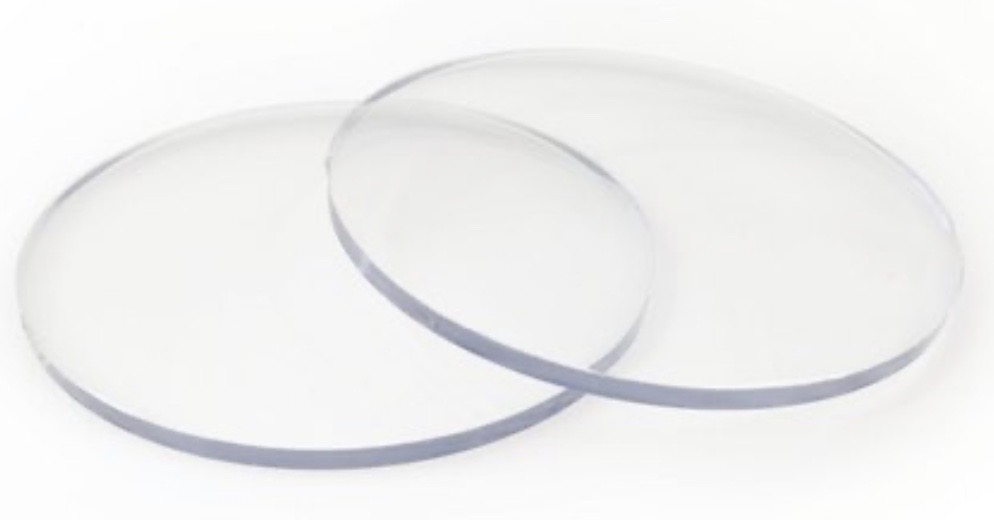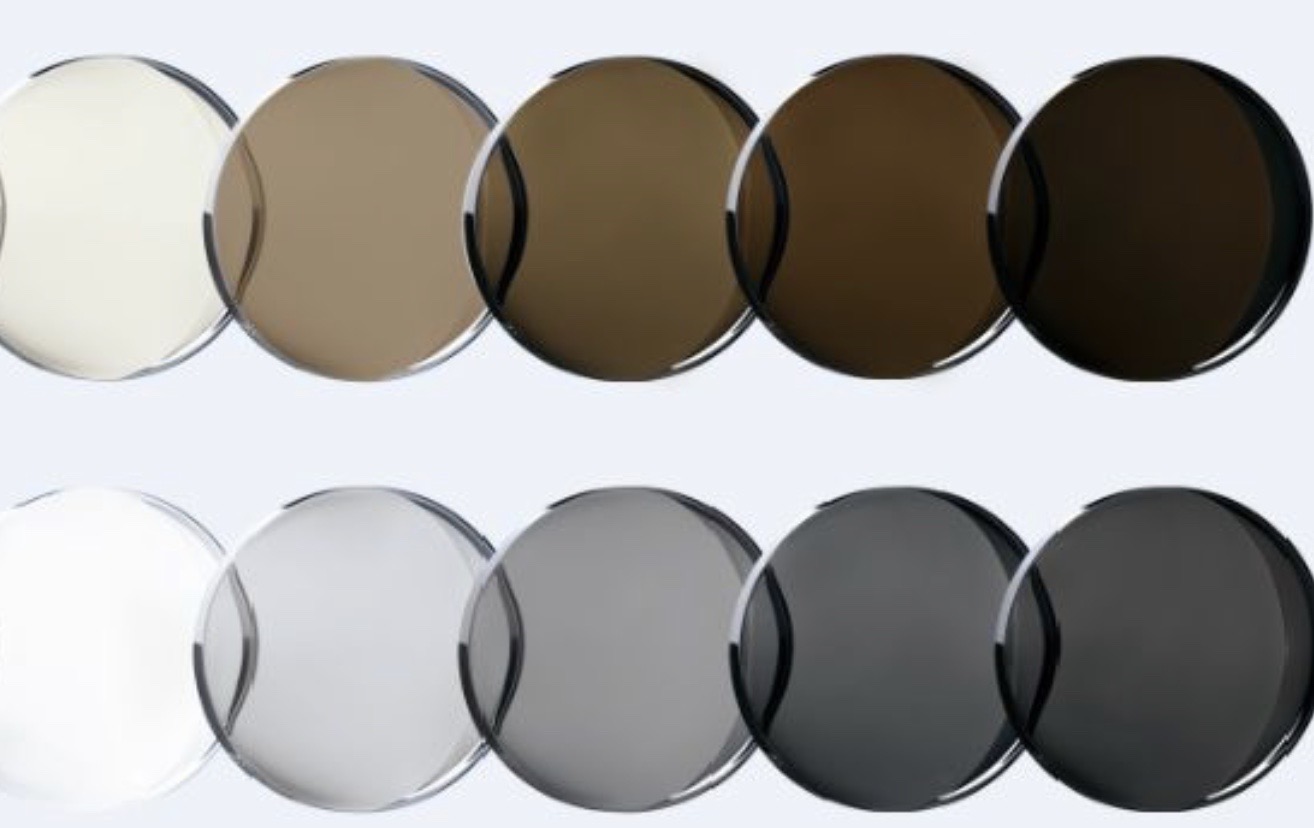Lens Information
![IMG_E3315[1]](https://theglasseslady.com/wp-content/uploads/2021/11/IMG_E33151.jpg)
Lens Materials
The material used in most spectacle lenses today is plastic as it is safer and lighter than its predecessor glass used years ago.
Most lenses are readily available in standard plastic which has a refractive index (light bending ability of material) of 1.5.
Then you have 1.6 index plastic which is about 20% thinner and lighter than standard 1.5, then 1.67 index which is about 33% thinner and lighter than standard 1.5 and then 1.74 index which is about 40% thinner and lighter than standard 1.5 all depending on the prescription used.
Lens Types
There are 4 main categories of lens prescriptions, Single Vision Lenses, Bifocal Lenses, Varifocal and Vocational Lenses.
Single Vision can be split further into distance, intermediate and near vision Lenses.
While we are young our eyes can focus on things at different distances. If we need a spectacle prescription during youth, we can still focus at different distances so the one pair will help us do everything.
As we get older the lens within our eyes loses the ability to focus on things at different distances, especially things up close. This is an age-related condition, known as Presbyopia and is when separate distance and near glasses are now required or combining the two powers into either a Bifocal or a Varifocal.
A bifocal lens offers two corrective powers, most often this is distance at the top of the lens and Near for reading in the segment of choice which can vary in size. A varifocal lens offers a lens with the distance corrective power at the top of the lens and a gradual increase in power down the lens providing intermediate (computer etc) and then near (reading etc) at the bottom of the lens with no lines or segments on the lens. A vocational lens allows for a wide intermediate corrective power (Computer work) with a wide near corrective power (Reading etc) under it and a small glance up distance power at the top of the lens. The distance portion is variable depending on working distance and can be chosen by the wearer to suit their working environment. (These lenses are all available through our mobile dispensing services)
![IMG_E3315[1]](https://theglasseslady.com/wp-content/uploads/2021/11/IMG_E33151.jpg)

![IMG_E3244[1]](https://theglasseslady.com/wp-content/uploads/2022/03/IMG_E32441-e1643735575557.jpg)
![IMG_E6042[1]](https://theglasseslady.com/wp-content/uploads/2022/04/IMG_E60421-scaled.jpg)


Quality Products at Affordable Prices
We are proud to align ourselves with the highest quality lens suppliers. Our commitment is to provide the best in lens quality options at affordable prices.

News Page
Providing you with current knowledge & thinking on lenses and lens products to assist informed choices.

EyeCare
Single Vision lenses are readily available for ease of use with limited prescription and any advice if required. All other lens options are available through our Mobile Dispensing Service where we will be happy to schedule a visit with a Dispensing Optician.
Qualified Advice
Understanding your spectacle prescription may be frustrating. We will happily assist you to make an informed choice by answering any questions. If a lens you wish isn’t readily available, please enquire as it may be a Special order lens or within our Dispensing Service Lenses.
Choosing Lenses
Considering just a few basics should help you find the right lenses for the optimum comfort & vision.
How To Choose Lenses
- Consider the spectacle prescription requirements. e.g. What do you need the prescription for: Distance, Intermediate or Near vision? This may influence how deep or shallow the frame can be.
- If you have a Distance & Near prescription, do you prefer 2 separate pairs of glasses or one pair that allows you to see in both areas at same time such as a Bifocal or Varifocal. (Please note: Bifocals & Varifocals are only available through our mobile dispensing service)
- Are you troubled by glare from oncoming headlights or when looking at your computer screen? You might want to add an Anti-Reflective Coating to your lens design.
- Do you just need a straightforward clear lens or are you a bit sensitive to light? You might want to consider photochromic lenses that stay clear indoors and go dark outside or having a separate pair of polarised sunglasses to your prescription for outdoor use.
FAQ
When are thinner lenses a good idea?
Thinner & lighter lenses are available to anyone concerned about weight from their lenses. The difference between standard and thinner lenses is, however, more noticeable the stronger the prescription is. A prescription of -3.00D / +3.00D and above should appreciate this difference.
What are polarised lenses?
Normal Sunglasses block light transmittance such as 15% LTF Suntint lenses (allowing only 15% light transmittance) but they do not block glare.
When light hits a surface, especially a wet one, the light waves travel in in different directions, vertical light waves are absorbed, and horizontal light waves bounce off the surface creating polarisation and causing troublesome glare.
The glare produced can be removed by using polarised sunglass lenses.
These Polarised lenses are laminated with vertical stripes that only allow vertically angled light into the wearers eye. Glare is now eliminated as the horizontal light waves cannot get past the vertical filter.
The lens wearer can have comfort from glare and quality of vision.
Why can't I keep my lenses clean?
Lenses pick up fingerprints when we touch them or any close contact with face during mask wearing/handling etc.
An Easy Clean coating such as the one offered at £20 provides a multi layered Anti-Scratch/Anti-Reflective and Easy Clean coating for optimum vision and clarity.
Is it better to have a tint on my lens or light changing lenses?
A tint on a lens is a static thing that will remain there all the time.
Indoors and outdoors the tint will affect the vision, which may not be helpful indoors.
Dark tints are better suited to be used as sunglasses for outdoor use only.
The benefit of photochromic (changing with UV) lenses is the clear lens when indoors and dark lens when outdoors.
How can I prolong the life of my lenses?
Our INCLUSIVE Anti-Scratch coating should assist in prolonging life of lenses.
Avoiding cleaning lenses with tissues and abrasive materials can help too.
Is it better to have seperate distance & readers or bifocals / varifocals?
Separate pairs of Distance & Near glasses provide lenses just for distance or near in the separate frames, so you have 2 sets of glasses and as a result, more lens area for both distance and near to see through.
In a Bifocal or Varifocal there is just one lens providing the different areas of focus such as Distance and Near, so it is a shared area in the lens.
There can be some adaption as a new wearer, but millions of bifocal or varifocal wearers say it is easier than remembering to always have your readers with you!
What lens material should I choose?
The lens material to choose depends on the prescription. If it is quite straightforward then standard plastic 1.5 index will be fine.
If you want lighter weight, then you could consider 1.6 mid-index or higher if prescription warrants it.
As the prescription gets stronger the options of the higher index materials are available to make the lenses thinner and lighter by up to 40% depending on prescription compared to standard plastic 1.5 index.


